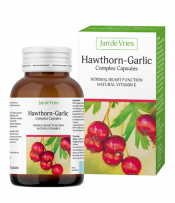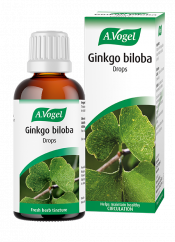An introduction to blood pressure
Blood pressure is the force at which blood is being pumped around the body.
Healthy blood pressure ranges from 120/75 mmHg to 140/85 mmHg. The first number is the systolic pressure – the pressure in the arteries when the heart is pumping. The second number is the diastolic pressure – the pressure in the arteries when the heart is at rest, in between pumping.
Blood pressure that is lower than these figures indicates that the walls of the blood vessels are too relaxed and, therefore, blood isn't being pushed around the body efficiently. It also suggests that nutrients carried in the blood, such as oxygen and iron, may not reach the tissues properly. This can contribute to a range of symptoms, as outlined below.
What is low blood pressure?
Low blood pressure is also known as hypotension (as opposed to hypertension: high blood pressure). A low blood pressure reading is considered to be around 120/75mmHg.
Unlike high blood pressure, which can increase the risk of a heart attack or stroke, low blood pressure poses no immediate dangers to health, so is not always regarded with the same concern. However, low blood pressure can still result in some noticeable symptoms.
Symptoms of low blood pressure
If organs have a poor supply of blood, this can lead to several unpleasant symptoms that may affect quality of life.
Fainting/dizzy spells
When blood pressure is too low, the supply of blood to the brain can suffer. Without adequate oxygen and glucose reaching the brain, dizziness and fainting spells may occur, especially upon standing. It is also common to experience tunnel vision upon standing up as a result of this.
Fatigue
If blood isn't being pushed around the body efficiently due to low blood pressure, iron may not reach tissues. Iron is vital for carrying oxygen to your brain and muscles, and plays an important role in converting blood glucose to energy. Therefore, fatigue is a common symptom of low blood pressure.
Cold hands and feet
Blood supply to your extremities can also be affected by low blood pressure, as your heart has to pump harder to circulate blood. Even if the weather is mild, you might suffer from chilly hands and feet.
Rapid pulse on exertion
The pulse rate tends to be fast when blood pressure is low, as the body tries to make up for the low pressure by pumping faster. This can result in a particularly fast heart beat during exercise.
Other
Whilst these are perhaps the most common symptoms of low blood pressure, other issues may arise, including:
- Sensitivity to hot and cold
- Low endurance
- Low libido
- Difficulties in getting off to sleep
- Sleep disturbances, night terrors, sudden waking with no obvious cause
- Difficulty getting going in the morning
- Frequent headaches or migraines
- Low mood, sadness and hopelessness.
What causes low blood pressure?
Blood pressure can naturally be low in some people; however, it can also be influenced by various factors.
Sedentary jobs or lifestyles – this can contribute to both high and low blood pressure. Getting your circulatory system moving is important for avoiding both.
Medication - some medications, including those for cardiac conditions and neurological disorders, can contribute to low blood pressure. Your doctor will be able to explain this further.
Health conditions - People with Chronic Fatigue Syndrome are very likely to have low blood pressure and this can contribute considerably to their symptoms, particularly fatigue and light-headedness. Other conditions that can contribute to low blood pressure include adrenal exhaustion, hypoglycaemia (low blood sugar), hypothyroidism (low thyroid function) and anaemia (lack of iron).
Inherited factors – Low blood pressure can be a problem inherited from your parents.
Dieting – A low-sodium diet, in particular, can contribute to low blood pressure. A balance must be met, however, as high blood pressure can be caused by eating too much salt. Low protein intake can also be a factor in low blood pressure. This nutrient is found in foods like meat, fish, dairy and beans.
Dehydration – This too can be a factor in low blood pressure. Symptoms often materialise after a bout of sickness when appetite is reduced and you are more likely to become dehydrated. When you recover and eat normally, any symptoms should diminish quickly.
How to deal with low blood pressure
There are various steps you can take to manage low blood pressure at home.
Diet and lifestyle
Get up slowly - After a period of relaxation (such as sleeping) where the heart doesn't have to work hard, blood pressure will drop considerably. Prepare yourself for rising by wiggling your toes and contracting your thigh and calf muscles, before getting up. Sit up in bed for a few minutes before standing up slowly.
Take care when getting out the bath - Having a hot bath will dilate arteries and can cause extreme light-headedness when getting out of the bath.
Do regular gentle exercise - Anything that involves pumping your calf muscles will improve your general circulation and move your blood pressure to a healthier level. It is important not to do too much, though, to avoid exhausting yourself. The key is for exercise to be regular and to be gentle: a 10-minute walk 2-3 times daily would be a good starting point.
Eat more complex carbohydrates – This includes opting for the likes of dried fruit instead of refined carbohydrates (refined sugar, chocolate, biscuits and sweeties) which are more problematic for blood pressure levels.
Eat regularly – Don't go for more than 3-4 hours without at least a snack, to keep blood sugar levels stable.
Drink carrot juice – this can be good for blood pressure problems.1
Drink more water – dehydration can be a factor in low blood pressure symptoms so ensure you are drinking approximately 8 glasses of plain, still water a day and cut down on caffeine which can contribute to dehydration.
Supplements
Hawthorn-Garlic Capsules – These have traditionally been used to support blood pressure and circulation. It is a long-term remedy and is suitable for use alongside other medication, so long as the doctor has been advised.
Ginkgo biloba – This herb helps in delivering blood to the extremities. It also helps to maintain healthy circulation.
My Top Tip:

"I always take capsules in preference to tablets. Hawthorne is the best herb for the heart/circulation and I like the fact that it is combined with something as beneficial as garlic."

Conventional medicines
The most suitable treatment for low blood pressure will depend on the individual. However, medication is rarely needed and, instead, the problem can be dealt with through simple lifestyle changes.
If necessary, the underlying cause of low blood pressure can be treated which should, in turn, improve symptoms.
Resolving low blood pressure can address many health problems so, if you think this is an issue for you, get your blood pressure checked and start (slowly and gently) back on the road to healthy circulation.
References
1 https://www.ncbi.nlm.nih.gov/pmc/articles/PMC3192732/








